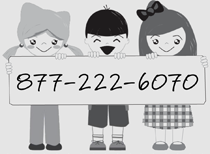| ChildCare Careers Newsletter - June 2020 | ||||||||||||

|
||||||||||||
|
“Happy Father's Day!”
|
|||||||||||
| June 11 |
Beyond COVID-19: Preparing to Support Preschool Children to Reintegrate to the Classroom Online Webinar www.earlychildhoodwebinars.com |
| June 17 |
WOW Webinar: The Laws of Growth Online Webinar www.earlylearningleaders.org |
| June 18 |
Rebuild Your ECE Program for the New Normal: Part 1 Online Webinar www.earlychildhoodwebinars.com |

Guidance for Child Care Programs
General Preparedness and Planning
As you think about how your facility will deal with the impact of COVID-19, it is important to work with your local health officials, school districts, child care licensing boards/bodies, child care accreditation bodies, health consultants, and other community partners to determine the most appropriate plan and action. This document is meant to help administrators create emergency operations plans and tailor them to your community’s level of transmission.
Prevent the Spread of COVID-19
Plan ahead to ensure adequate supplies to support hand hygiene behaviors and routine cleaning of objects and surfaces.
- Wash hands often with soap and water. If soap and water are not readily available, use an alcohol-based hand sanitizer with at least 60% alcohol.
- Remember to supervise young children when they use hand sanitizer to prevent swallowing alcohol.
Require sick children and staff to stay home.
- Communicate to parents the importance of keeping children home when they are sick.
- Communicate to staff the importance of being vigilant for symptoms and staying in touch with facility management if or when they start to feel sick.
Have a plan if someone is or becomes sick.
- Plan to have an isolation room or area (such as a cot in a corner of the classroom) that can be used to isolate a sick child.
- Be ready to follow CDC guidance on how to disinfect your building or facility if someone is sick.
Monitor and Plan for Absenteeism Among Your Staff
- Develop plans to cover classes in the event of increased staff absences (ChildCare Careers can help with this)
Social Distancing Strategies
Work with your local health officials to determine a set of strategies appropriate for your community’s situation. Continue using preparedness strategies and consider the following social distancing strategies:
- If possible, child care classes should include the same group each day, and the same child care providers should remain with the same group each day.
- Consider whether to alter or halt daily group activities that may promote transmission.
- Consider staggering arrival and drop off times and/or have child care providers come outside the facility to pick up the children as they arrive.
Parent Drop-Off and Pick-Up
- Hand hygiene stations should be set up at the entrance of the facility, so that children can clean their hands before they enter.
- Ideally, the same parent or designated person should drop off and pick up the child every day.
Screen Children Upon Arrival (if possible)
Persons who have a fever of 100.4° F or above or other signs of illness should not be admitted to the facility. Encourage parents to be on the alert for signs of illness in their children and to keep them home when they are sick. Screen children upon arrival, if possible.
Clean and Sanitize Toys
- Toys that cannot be cleaned and sanitized should not be used.
- Toys that children have placed in their mouths or that are otherwise contaminated by body secretions or excretions should be set aside until they are cleaned.
- Do not share toys with other groups of infants or toddlers, unless they are washed and sanitized before being moved from one group to the other.
Clean and Disinfect Bedding
Use bedding (sheets, pillows, blankets, sleeping bags) that can be washed. Keep each child’s bedding separate, and consider storing in individually labeled bins, cubbies, or bags. Cots and mats should be labeled for each child. Bedding that touches a child’s skin should be cleaned weekly or before use by another child.
Caring for Infants and Toddlers
Diapering
When diapering a child, wash your hands and wash the child’s hands before you begin, and wear gloves. Follow safe diaper changing procedures. Procedures should be posted in all diaper changing areas.
Washing, Feeding, or Holding a Child
It is important to comfort crying, sad, and/or anxious infants and toddlers, and they often need to be held. To the extent possible, when washing, feeding, or holding very young children:
- Child care providers should wash their hands, neck, and anywhere touched by a child’s secretions.
- Contaminated clothes should be placed in a plastic bag or washed in a washing machine.
- Infants, toddlers, and their providers should have multiple changes of clothes on hand in the child care center or home-based child care.
- Child care providers should wash their hands before and after handling infant bottles prepared at home or prepared in the facility.
Other Resources
CDC’s website contains a variety of resources for child care programs and K-12 schools, including detailed guidance, considerations for closures, and frequently asked questions for administrators, teachers, and parents.
The resources emphasize that any decision about temporary closures of child care programs or cancellation of related events should be made in coordination with your federal, state, and local educational officials as well as state and local health officials.
* Excerpts from “Guidance for Child Care Programs that Remain Open” - Centers for Disease Control and Prevention
(www.cdc.gov)

Call us anytime at 877-222-6070.



